
Wroclaw is one of the most attractive, intriguing, and rapidly expanding Polish cities today. But right after World War II, things did not look good for it. It underwent severe damage during the fighting in the first half of 1945 after being transformed into a fortress city in 1944. Over 100 000 lives were lost, and it is estimated that 65 percent of urban tissue was destroyed.
Following the liberation, robbers prowled the city, and Soviet troops returning home not only took the most valuable items but also set entire neighborhoods on fire and detonated them. Nobody was certain whether the city would remain Polish or whether it would turn back into Germany as a result of the post-war establishment of borders, so the city's flooding Polish residents—the vast majority of whom were repatriates from the east—did not feel any ties to it.
Wroclaw quickly earned the title of "the capital of the Polish Wild West" after becoming orphaned and stripped of everything valuable.
European capital of culture
Wroclaw celebrated its rebirth as the European Capital of Culture 71 years after the conclusion of World War II. Only a memory remained of the chaos of the war and what happened next. Every aspect of the city has been rebuilt, including the architecture, history, culture, society, and economy. With the help of top-notch universities, it has grown to be the most significant location in Lower Silesia, drawing businesses, investments, and large numbers of young people.
Today's Wroclaw is a distinctly European city with a wide range of attractions for visitors.
With more than a hundred bridges, including footbridges, and numerous rivers, canals, and islands, the area is known as "the Polish Venice" and attracts tourists. Every stage of its architecture reflects its multiculturalism and complex history; Gothic, Renaissance, Baroque, Art Nouveau, Modernism, the national style of the Third Reich, socialist realism, and postmodernism coexist in harmony, if not always in a fashionable way. Not only locals but visitors from abroad and across Poland are drawn by the diverse cultural offerings.
Whatever their reasons for visiting, Wroclaw is a welcoming city for all newcomers.
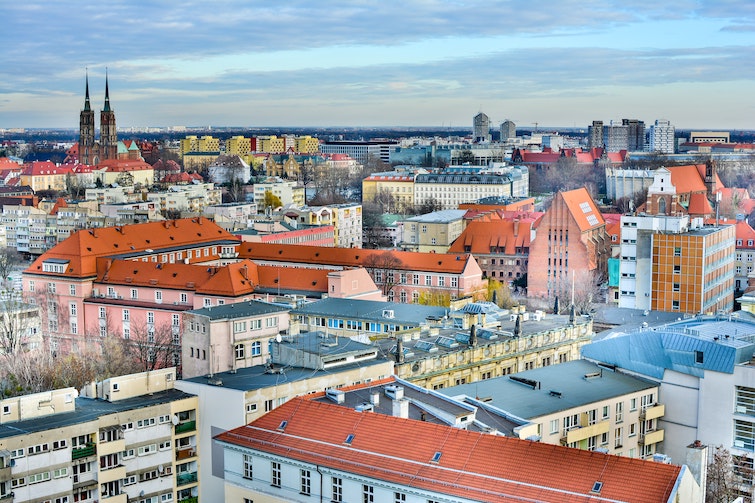
fot. Serhii Perevera, unsplash.com
How to get to Wrocław?
Wrocaw, one of the biggest cities in Poland, has excellent connections to both the rest of the country and its neighbors. Both domestic and international flights are handled by the airport, and local, national, and foreign trains all stop at the Wroclaw Gówny station.
Our offices are located both at the airport and the train station.
The city benefits from a good network of express roads as well. The S8 expressway, which has reduced travel time to the capital to about 3.5 hours, the S5 connecting Wrocaw with Pozna, and finally the S3 running from Lower Silesia to Western Pomerania are all within 10-20 minutes of the city. The A4 motorway, which is part of the European E40 route, crosses the south of Poland from west to east.
There are a variety of ways to travel to the city, but it's recommended to rent a car if you want to explore beyond the city's core.
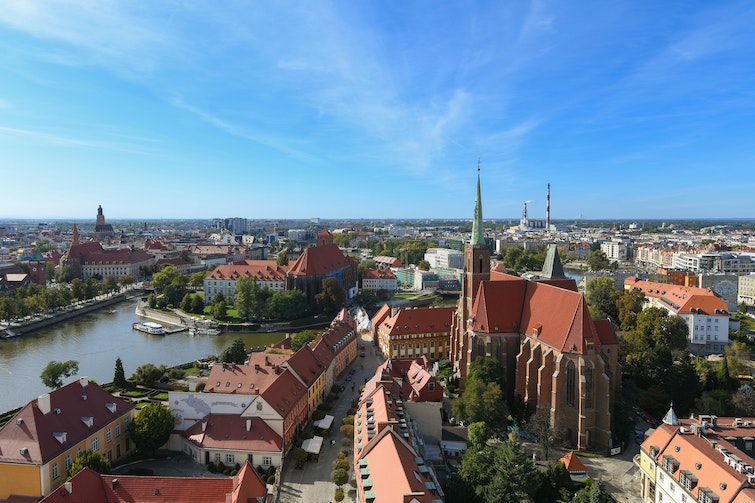
fot. David Mohseni, unsplash.com
What to see?
Wroclaw is one of those cities that offers something to suit every taste. We can't fit all of the Lower Silesian capital's attractions into one short text, so we've listed our personal top 5 for you to check out when you're there.
The Market Square
A must-see spot on the map of all tours. One of Europe's biggest medieval markets is located in the Market Square of Wroclaw. It was the primary location for trading when its boundaries were established in the 13th century, along with the nearby Pl. Solny (Salt Plaza) and Nowy Targ.
There are as many as 11 streets leading to the Market Square, and the square itself has nearly 40,000 sqm. The gothic Old Town Hall, which is now home to a museum, is located in the center of it. The New Town Hall serves as the home of the city government.
Wealthy Wrocaw residents built many of the vibrant tenement buildings that surround the square, including Kamienica pod Gryfami and Kamienica pod Elektorami. You will find well-known Wrocaw bars and eateries in their cellars and ground floors, including one of the country's oldest establishments, Piwnica Widnicka, which dates back to 1273.
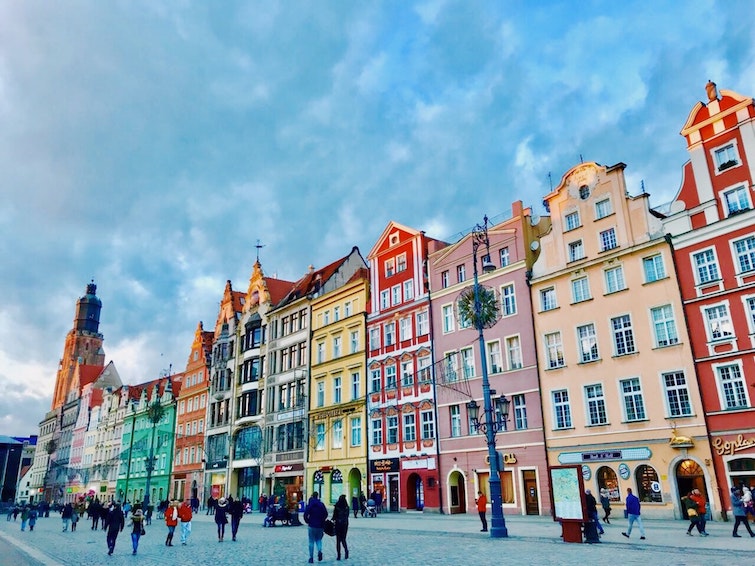
fot. Reiseuhu, unsplash.com
Ostrów Tumski
One of Wroclaw's oldest neighborhoods, Ostrów Tumski, is home to some of the city's most stunning religious structures, including the Gothic John the Baptist Cathedral, built in the thirteenth century, as well as the Church of St. Cross and the Church of St. Martin. Additionally, the University of Wroclaw has a stunning botanical garden where numerous specimens of flora from all over the world have been gathered.
This region was an island until the nineteenth century, but it joined the mainland when one of the arms of the Odra River was filled. Additionally, the character of Ostrów Tumski was exclusively religious until the 19th century. The sacred and the profane are now intertwined, but time still moves a little more slowly here than it does elsewhere in the city, and the gas lanterns are lit with a lighter.
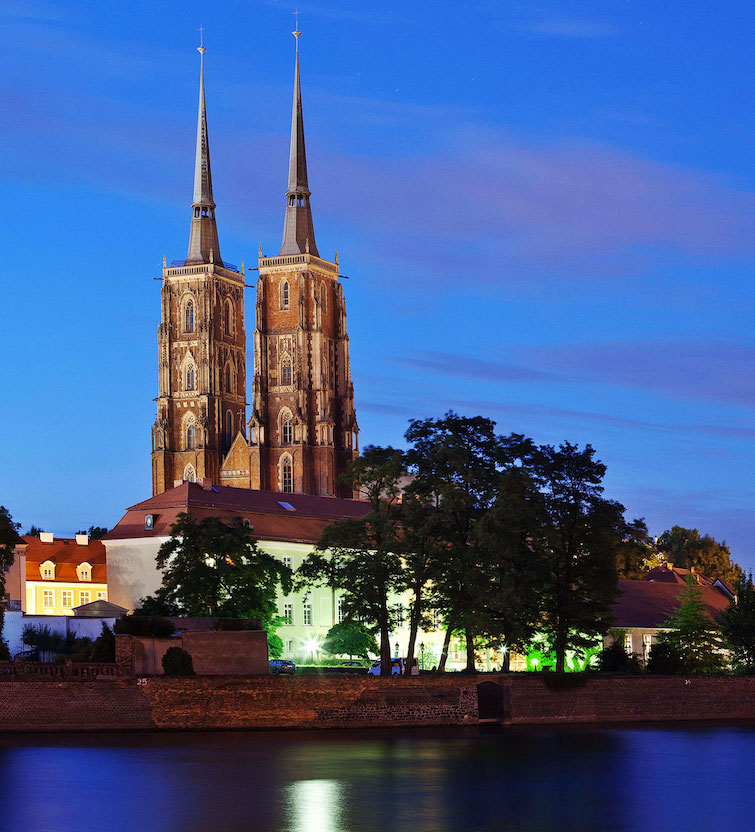
fot. visitwroclaw.eu
Wrocław bridges
It is very challenging to pick the few most stunning and intriguing bridges from a city with over 130 bridges. Nevertheless, in our list, we will mention the three most characteristic ones.
The Tumski Bridge, which connects the previously mentioned Ostrów Tumski with the Sand Island, is unquestionably a favorite location for lovers. Here, they leave padlocks as a symbol of their enduring love for one another.
There are statues of St. John the Baptist and St. Jadwiga that serve as a bridge that joins the city's secular and religious areas. There were drawbridges here before the current steel bridge was built in 1889.
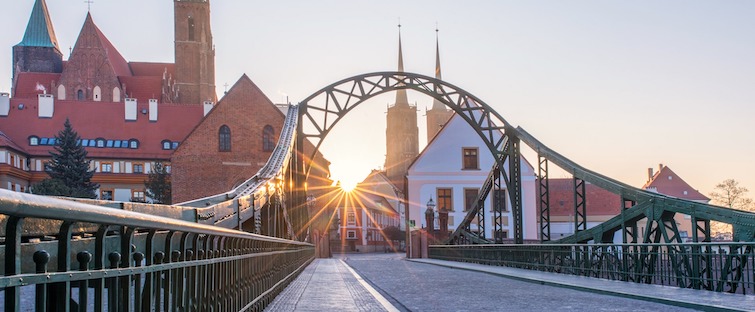
fot. visitwroclaw.eu
The Sand Bridge has the distinctive red balustrades. It is the oldest iron bridge in Wrocław, opened in 1861. The northern and central parts of the city are connected by the Piaskowy Bridge. Its name is derived from Sand Island.
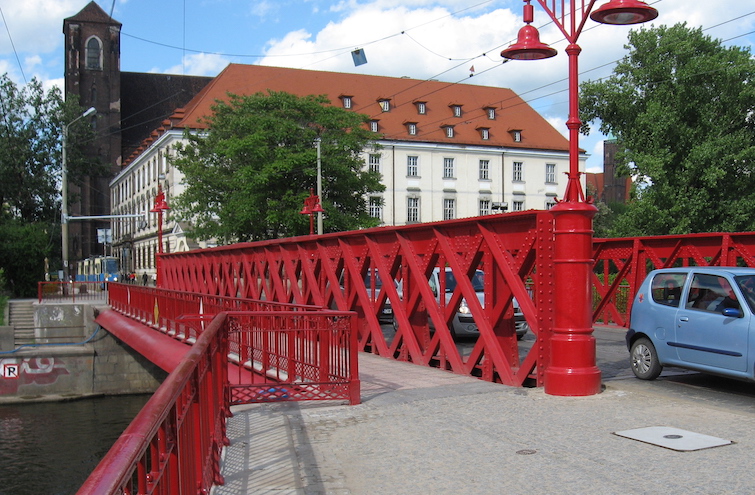
fot. visitwroclaw.eu
The last bridge that must be mentioned is the Grunwaldzki Bridge. The Imperial Bridge, originally known as the Liberty Bridge, later changed its name to Grunwald Bridge for a longer period of time. It was constructed at the turn of the 20th century from Strzegom granite and Karkonosze granite.
It was one of the most cutting-edge crossings when it was built because it used steel tapes to support the span. The Grunwaldzki Bridge has now been restored to its former splendor following numerous renovations.
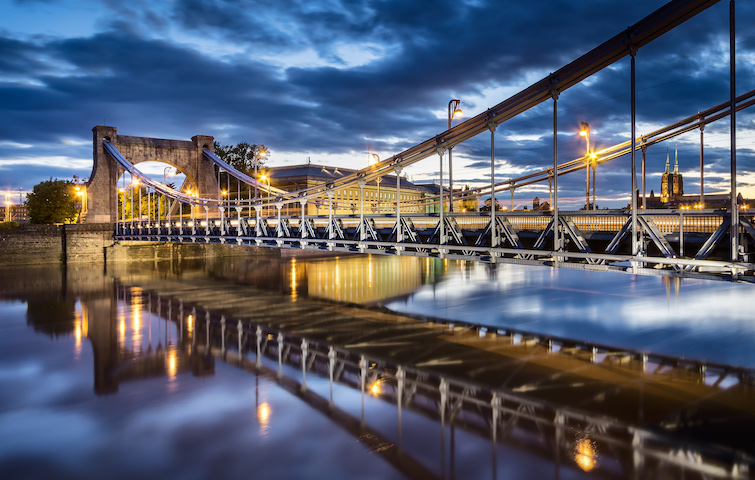
fot. visitwroclaw.eu
Centennial Hall
The magnificent and athletic Centennial Hall is one of Wroclaw's most recognizable and emotionally charged structures. While some see it as a stunning example of Wroclaw's modernism, others see it as a concrete monster evoking the city's German past.
In accordance with Max Berg's plans, the Centennial Hall was constructed between 1911 and 1913. It honored the 100th anniversary of Emperor Frederick William III's "To My People" address to the Prussian populace and the ensuing Leipzig victory over Napoleon's army. The location of the Centennial Exhibition was intended to be an exhibition space.
The Centennial Hall stands apart from other structures of its kind thanks to the extensive use of reinforced concrete. Max Berg created it with functionality rather than aesthetics in mind, but (at least in some people's eyes) it is still stunning. This resulted in the creation of a distinctive and original structure that was added to the UNESCO World Heritage List in 2006.
The exhibition concept is completed by the Four Domes Pavilion, Pergola and Japanese Garden, which you can read more about below.
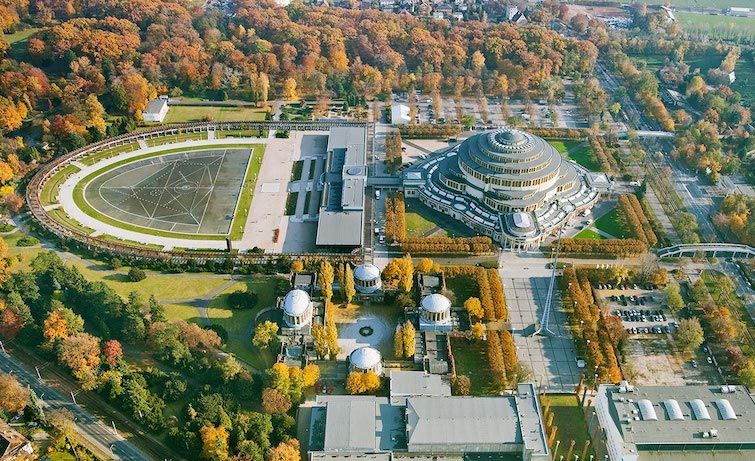
The Japanese Garden in Szczytnicki Park
Many people consider the Wrocaw Japanese Garden to be the most attractive feature of Szczytnicki Park. It was the sole exotic component of the Horticultural Exhibition in 1913, and it was designed by masters from the Far East.
The garden was renovated between 1995 and 1997 based on a design by professor Ikui Nishikawa, but only two months after it had been inaugurated, it was submerged for three weeks during the century's flood. This necessitated the need for additional remodeling.
The Japanese Garden is now one of many people's favorite locations for strolls and wedding photo sessions. The abundance of the Far Eastern vegetation and the special atmosphere of this location encourage leisurely reflection.
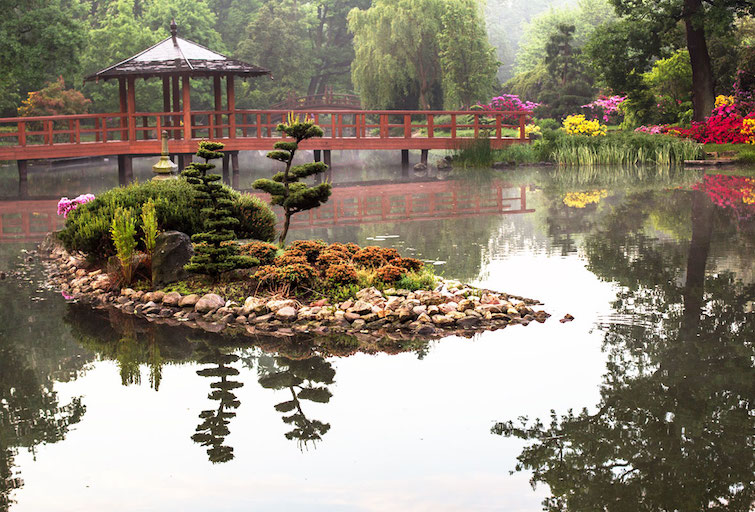
fot. visitwroclaw.eu
Wrocław dwarves
Our text about Wrocław would be incomplete if we did not mention the local dwarfs, which you will meet in various - sometimes very surprising - places in the city.
Legend has it that the Dwarf Kingdom's Underground World is located in Wroclaw. One can enter it through a mouse hole. However, no one knows which mouse hole it is. Since the dwarfs are unable to travel to Wrocaw, the city's citizens invite them to their world during the Dwarfs Festival in September. The gnomes celebrate their friendship with people then.
Instead of listing all the theories as to where the dwarfs originated because we don't want to bore you, we'll just ask you to carefully observe the streets of Wroclaw and look for the city's tiniest residents.
fot. visitwroclaw.eu